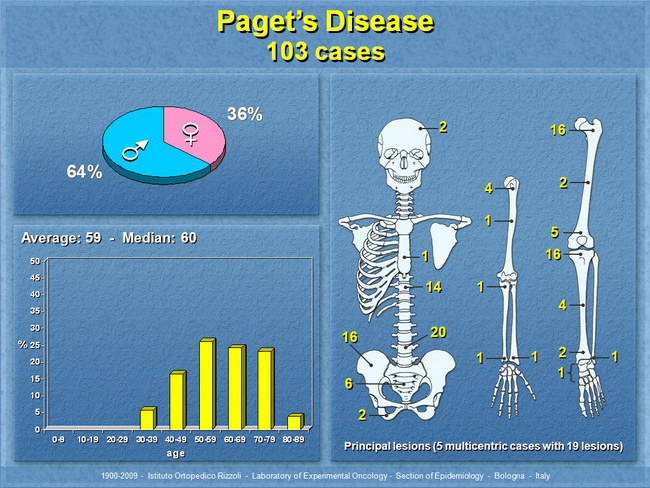Paget Disease of Bone : Epidemiology


Comments:
Epidemiology: Paget disease of bone (PDB) is common in European countries such as France, Italy and Spain and in people of European descent who have emigrated to countries such as Australia, New Zealand, USA, and Canada. The prevalence in N. Europe is estimated to be 3%-4% of all individuals above the age of 40 years based on autopsy studies. It is quite rare in the Indian subcontinent, Asian countries and Africa. The incidence and severity of PDB has rapidly declined in the last 25 years in many countries, including the UK. PDB tends to affect older populations. The majority of patients are in their 7th or 8th decade of life with a slight male predilection (M:F = 1.4:1). It is uncommon below the age of 40 years. A rare juvenile form of PDB has been described. It is an autosomal recessive condition and results from homozygous deletion of TNFRSF11B gene that codes for osteoprotegerin. Sites: PDB can affect a single (monostotic) or multiple bones (polyostotic) and may even be generalized in rare cases. Any bone can be involved, but the most common sites are pelvis, spine, femur, tibia, and skull. PDB is usually asymmetric, for example, involving only one femur. It does not spread from bone to bone, and it is uncommon for new bones to get involved. Slide courtesy of Piero Picci, M.D., Director, Laboratory of Experimental Oncology, Instituto Ortopedico Rizzoli, Bologna, Italy. Used with permission.



